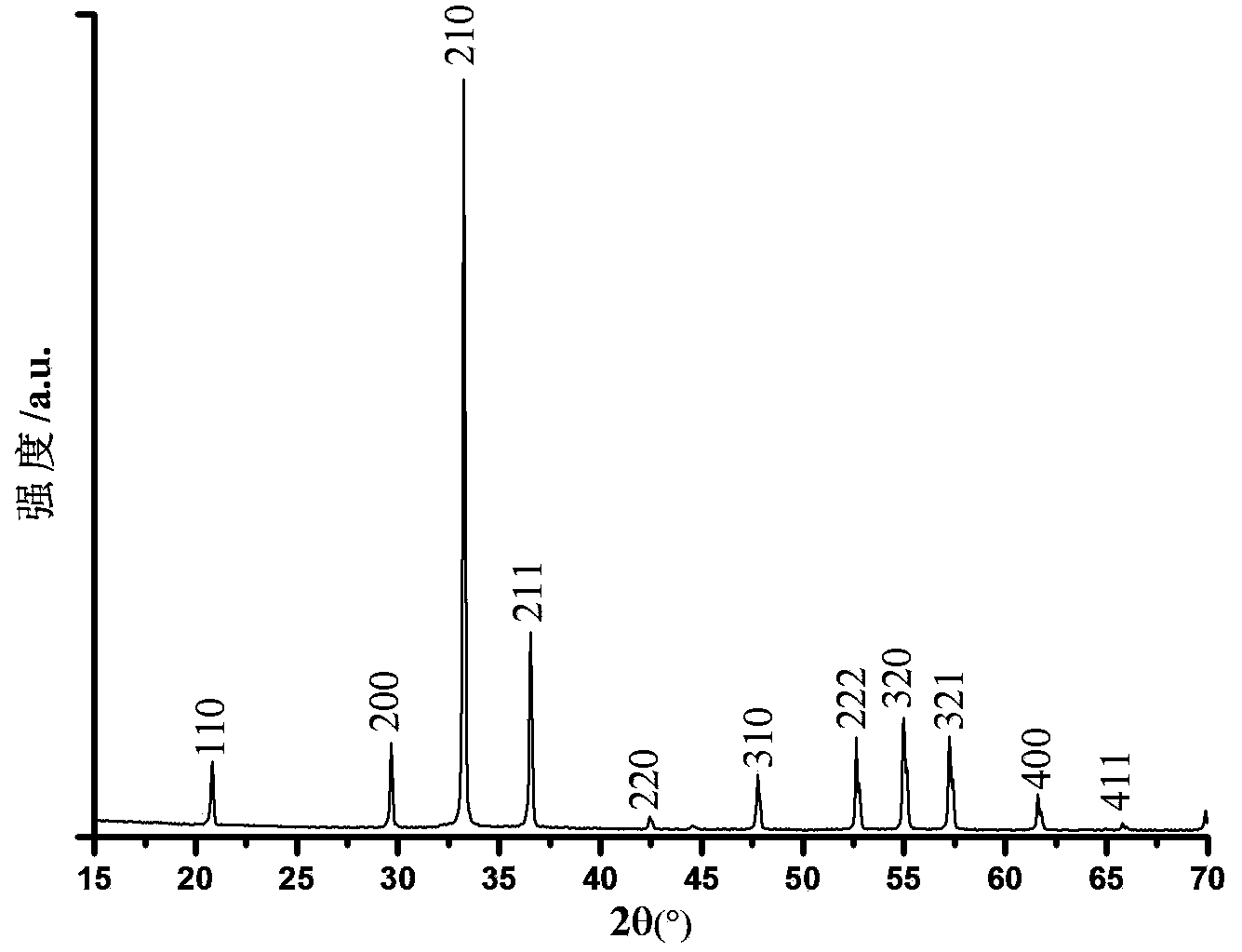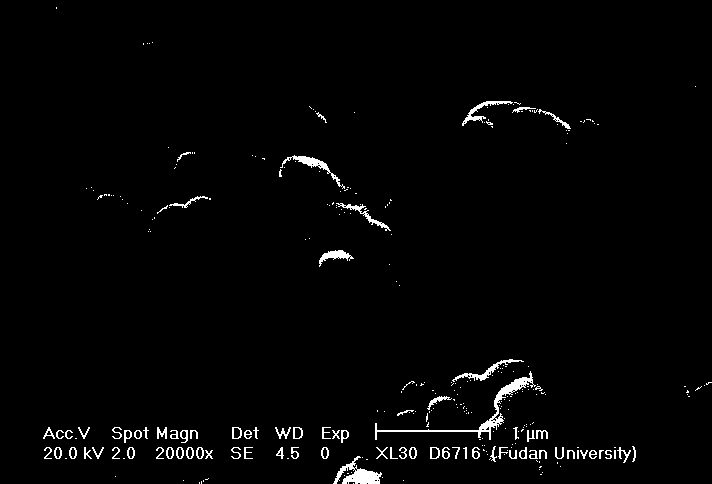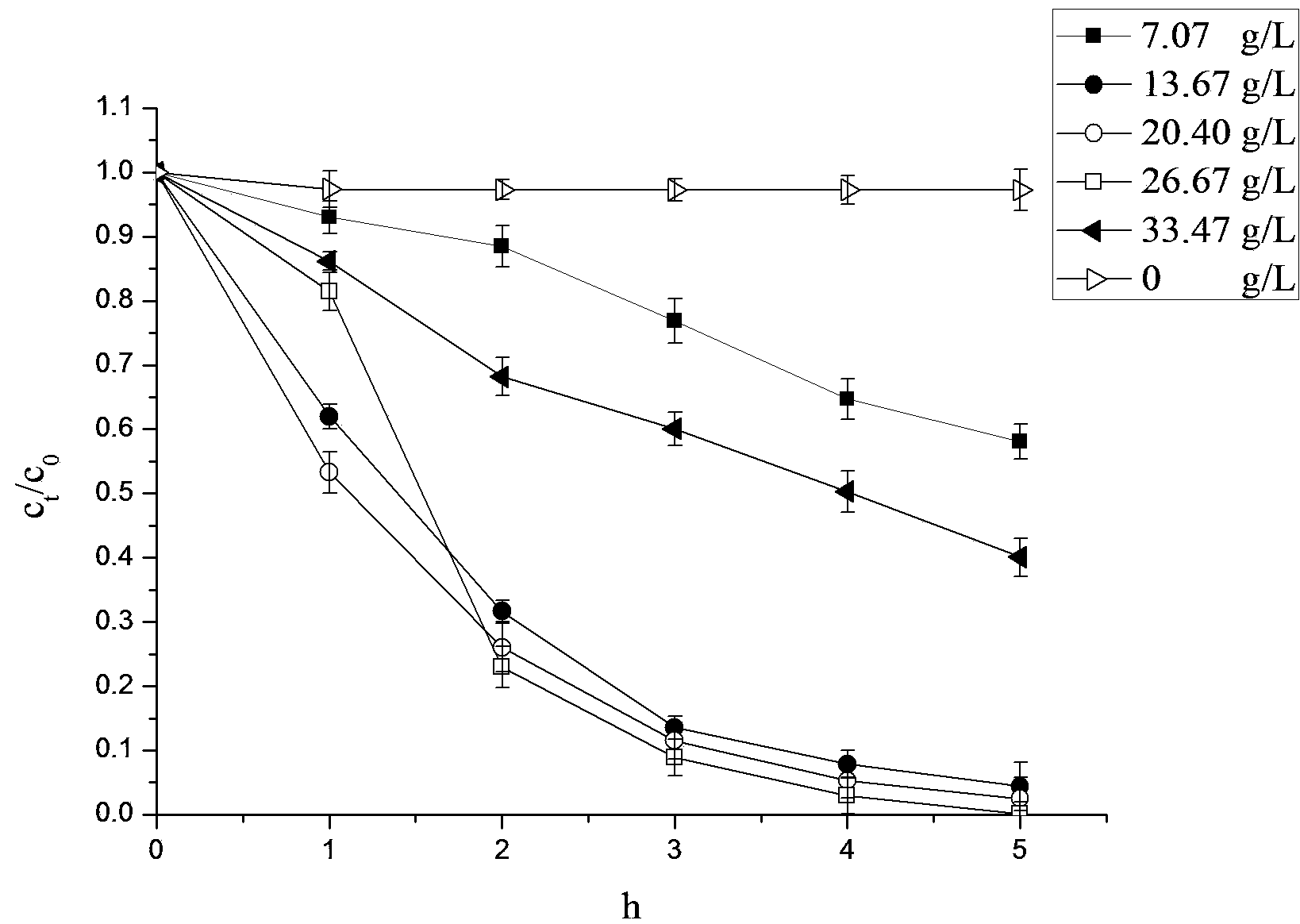Method used for degrading microcystin-LR in water by using visible-light-induced photocatalyst silver phosphate
A technology of microcystins and catalysts, which is applied in chemical instruments and methods, light water/sewage treatment, energy and wastewater treatment, etc. Effect
- Summary
- Abstract
- Description
- Claims
- Application Information
AI Technical Summary
Benefits of technology
Problems solved by technology
Method used
Image
Examples
Embodiment 1
[0026] At room temperature, the volume of the solution is 50 ml, and the pH is the original value. The concentration of MC-LR solution was 11.70 mg / L, without adding silver phosphate catalyst, after magnetic stirring for 1 h in the dark, the xenon lamp light source was turned on, and about 1.5 ml was sampled every 1 h to detect the concentration by HPLC. After 5 hours of light irradiation, the concentration of MC-LR was 11.69 mg / L, basically not degraded.
Embodiment 2
[0028] At room temperature, the volume of the solution is 50 ml, and the pH is the original value. Add 0.35 g of silver phosphate powder to the solution with MC-LR concentration of 11.70 mg / L, stir magnetically for 1 h in the dark, turn on the xenon light source, and sample about 1.5 ml every 1 h to detect the concentration by HPLC. After 5 h of light exposure, the concentration of MC-LR decreased to 6.88 mg / L, and the degradation rate reached 34.59 %.
Embodiment 3
[0030] At room temperature, the volume of the solution is 50 ml, and the pH is the original value. Add 0.68 g of silver phosphate powder to the solution with MC-LR concentration of 11.70 mg / L, stir magnetically for 1 h in the dark, turn on the xenon lamp, and sample about 1.5 ml every 1 h to detect the concentration by HPLC. After 5 h of light, the concentration of MC-LR decreased to 0.50 mg / L, and the degradation rate reached 95.59%.
PUM
 Login to View More
Login to View More Abstract
Description
Claims
Application Information
 Login to View More
Login to View More - R&D
- Intellectual Property
- Life Sciences
- Materials
- Tech Scout
- Unparalleled Data Quality
- Higher Quality Content
- 60% Fewer Hallucinations
Browse by: Latest US Patents, China's latest patents, Technical Efficacy Thesaurus, Application Domain, Technology Topic, Popular Technical Reports.
© 2025 PatSnap. All rights reserved.Legal|Privacy policy|Modern Slavery Act Transparency Statement|Sitemap|About US| Contact US: help@patsnap.com



